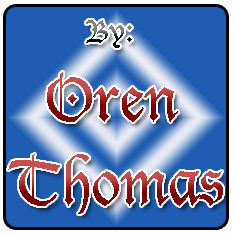Joints
Joints are connections between two or more joints. There are two sets of joints. These are movable joints and unmovable joints. Movable joints can be moved by muscles, and have cartilage between them. Cartilage is a spongy substance that protects the bones from wear and helps them move more smoothly. Unmovable joints are somewhat boring. They are found in places like the skull where there are multiple bones acting almost as one. There are four main types of movable joints:

Image from "http://en.wikipedia.org/wiki/Hinge_joint"
Hinge Joints
A hinge joint is a joint where bones fold together, but only in one way. An example of this is the elbow. Here there is the humerus bone on one side and the radius and ulna on the other. These two sets of bones act like a hinge; they open to a one-hundred eighty degree angle, but stop there. They close until they are almost touching, very much like the hinge on a door.
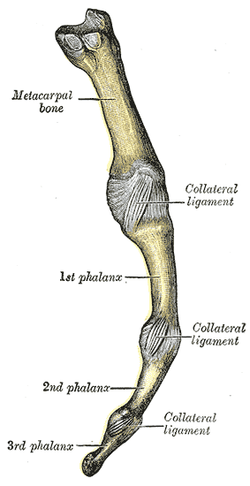
Image from "http://en.wikipedia.org/wiki/Hinge_joint"
^ Back to Top ^
Pivot Joint
A pivot joint is a joint where bones can rotate, one around another. This is shown in the lower arm. The radius is next to the ulna, a slightly thicker bone. The radius has the ability to slide around the ulna, causing the wrist to rotate. This is because the ulna stays still, causing the rest of the arm to not rotate. Here, the radius pivots around the ulna.
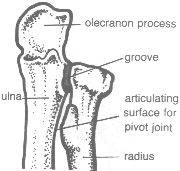
Image from "http://www.botany.uwc.ac.za/sci_ed/grade10/manphys/joints.htm"
^ Back to Top ^
Gliding Joint
A gliding joint is a joint where bones can slide against each other. One major gliding joint is between the vertebrae. The two vertebrae have flat tops and bottoms and sandwich cartilage. The vertebrae can rotate, bend, and generally adapt to many positions because of the sliding effect between them. This joint helps in the wrists and ankles, also, where there are many small bones that need to glide past one another to function properly.
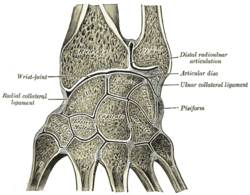
Image from "http://en.wikipedia.org/wiki/Gliding_joint"
^ Back to Top ^
Ball and Socket Joint
A ball and socket joint is a joint where bones can
move in pretty much any direction. For example, the
shoulder joint is a ball and socket joint. The humerus'
top end is a ball shape. This fits into a dimple in
the shoulder that gives it area to slide, rotate,
lift, and move in a forward and backwards motion.
The only thing that prevent it to go in any direction
in the rest of the body; other bones, muscles, nerves,
and the fact that it needs to be attached to the body.
^ Back to Top ^
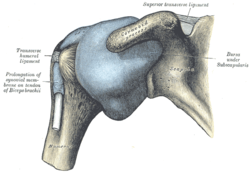
Image from "http://en.wikipedia.org/wiki/Ball_and_socket_joint"
^ Back to Top ^
